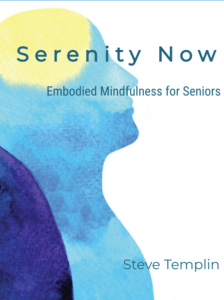A key theme of my blog posts is that ignored, avoided, and especially, unconscious feelings trigger a stress response that’s largely responsible for the breakdown of mental, emotional, and physical health that’s so prevalent.
Recently a meta-study that was co-sponsored by Harvard and Stanford Universities documented how workplace stress contributed significantly to an increase in diagnosed illness and early death.
This study, along with many others, is demonstrating what many of us know intuitively. Stress is the culprit.
Most days in my office I see positive changes that can’t be explained by conventional medical wisdom. I’ll summarize a research paper by Ronald Ruden, M.D., Ph.D, that sheds light on how the innocent act of connecting gently with feelings triggers healing.
Here’s the essence of Dr. Ruden’s neurobiological model, that involves two crucial steps.
Step one involves tuning into the feelings around an issue. This is accomplished by a gentle tuning into or noticing, no wallowing or suffering is necessary. It’s enough to sense that there are less than pleasant feelings present and to rate their intensity as mild, moderate, or severe.
That ‘tuning in’ activates circuitry in the brain that then becomes identified and available for reprogramming. It’s as if tuning into feelings brings the related issue out of a filing system buried on the hard drive and up onto the desktop where it’s clearly visible. This activation is accomplished biochemically by the release of an excitatory amino acid in the brain called glutamate.
For example, if I curiously notice the queasiness in my stomach that accompanies my fear of heights, as opposed to just talking about or thinking about my fear, or doing my best to avoid focusing on my fear, I’ve just caused the release of glutamate in my brain and identified the related neural circuitry for reprogramming and healing.
Step two involves triggering neurochemistry that specifically neutralizes the glutamate and the phobic response. For example, serotonin and GABA inhibit the glutamate and the related circuitry that produces the queasy fear in my stomach. The serotonin and GABA are released in response to pleasing sensory experience.
This two-step process would allow me to identify and neutralize my fearful, queasy stomach response to heights, enabling me to drive over a bridge without my previous fearful response.
This explains why sensory input like tapping acupuncture points is helpful in resolving phobias, as well as anxiety, other unpleasant emotional states, and even physical pain. Other sensory input can be just as effective. In the Havening Technique that Dr. Ruden developed, gentle, soothing touch replaces the tapping.
Any form of pleasant sensory experience can be effective in stimulating the neutralizing release of serotonin and GABA. Listening to pleasing sounds or music, caressing a smooth stone in one’s hand, the feeling of relaxation that comes from acupressure and acupuncture, or the scent of an aromatherapy oil, and more, provide the sensory experience that’s needed to trigger deep healing in step two.
I hope this bit of scientific understanding helps you to trust and participate more in your own healing.
 Steven Templin, D.O.M., Dipl. Ac. specializes in Acupuncture and Limbic Brain Reprogramming to address the roots of chronic pain and illness. He offers a comprehensive mind-body program for addressing the underlying inflammation, toxicities, and stress-induced causes of most pain and illness.
Steven Templin, D.O.M., Dipl. Ac. specializes in Acupuncture and Limbic Brain Reprogramming to address the roots of chronic pain and illness. He offers a comprehensive mind-body program for addressing the underlying inflammation, toxicities, and stress-induced causes of most pain and illness.
He places special emphasis on resolving the stress response and repairing adrenal gland and digestive system function to address the root causes of many common and often difficult to treat illnesses.
He translates emerging research in the fields of Epigenetics, Energy Psychology, and Functional Nutrition into effective practices that you can perform at home.
You can work with Dr. Templin in his Lakeland office, or online. You can visit his website at www.stevetemplin.com and contact him via email at drtemplin@gmail.com.
You can schedule an office visit with Dr. Templin by calling 863-838-2779.

 Steve is a retired Doctor of Oriental Medicine, Acupuncture Physician, and HeartMath Trauma-Sensitive Certified Practitioner with over 35 years of clinical experience in the fields of Energy Medicine, Energy Psychology, and Biofeedback.
Steve is a retired Doctor of Oriental Medicine, Acupuncture Physician, and HeartMath Trauma-Sensitive Certified Practitioner with over 35 years of clinical experience in the fields of Energy Medicine, Energy Psychology, and Biofeedback. 